First of all I must say, specially to manage the expectations of the demanding reader and perfectly illustrated in what we call Microsoft Dynamics 365, that with this article I am not trying to analyse in depth the guts of the “new” Dynamics 365HR since I am not a consultant of the product and even less a tech professional of this tool.
What I would like is just to reflect a little on what has happened to this business application since its launch, and highlight what personally, as Human Resources professional, I think makes Dynamics 365 Human Resources stand out from other comparable applications to help us manage, take care of and retain the most important thing, human capital.
It is possible that someone, just starting to read, has already made a WhatsApp emoji face raising the eyebrow when you see “new” D365HR and it turns out that what it’s commonly said “brand new” in this case is very little… unlike virtues luckily for us because the more I know about it, the more I like it.
The Dynamics 365HR that can enjoy today is the result, above all, of two key events in its life: first, the acquisition by Microsoft of the largest social network of professionals worldwide, Linkedin. And the other, the launch not long ago, of what we called at the time Dynamics 365 for Talent.
If you allow me, I will start with the second one (we are such a rebels in Axazure 😉). The tool that was launched in 2018 as D365 Talent contained 3 different modules:
- Attract: focused on recruiting.
- Onboarding: dedicated to all activities that must be activated in the momento a candidate accepts a job offer and even for a few months after as a follow up.
- HR Core: for the usual HR tasks that are needed internally.
In parallel, the acquisition of Linkedin, which was announced back in 2016, took shape and became increasingly integrated into Microsoft’s long-term strategy, leading to the announcement in 2019 that the very young D365 for Talent, less than two-year-old, was to be retired. However, every cloud has a silver lining, the main reason was to replace the Attract & Onboarding modules with Linkedin Talent Hub and re-name the application as Dynamics 365 Human Resources. I know, you are all astonished that Microsoft, in such a short time, has thought of re-branding one of its products.
In this way Dynamics 365 Human Resources was born, already converted, in my opinion, into one of the best Human Resources management software that exist nowadays. Not only do we have it in the cloud, with the advantages that this implies, but also we can integrate it with the rest of Dynamics 365 applications, with Teams and, the absolute jewel in the crown for a recruiter, Linkedin Talent Hub.
In addition to the integration with Linkedin, D365HR has the benefits and other functionalities that every Human Resources professional would like to have in one place, well organised and as visual as possible.
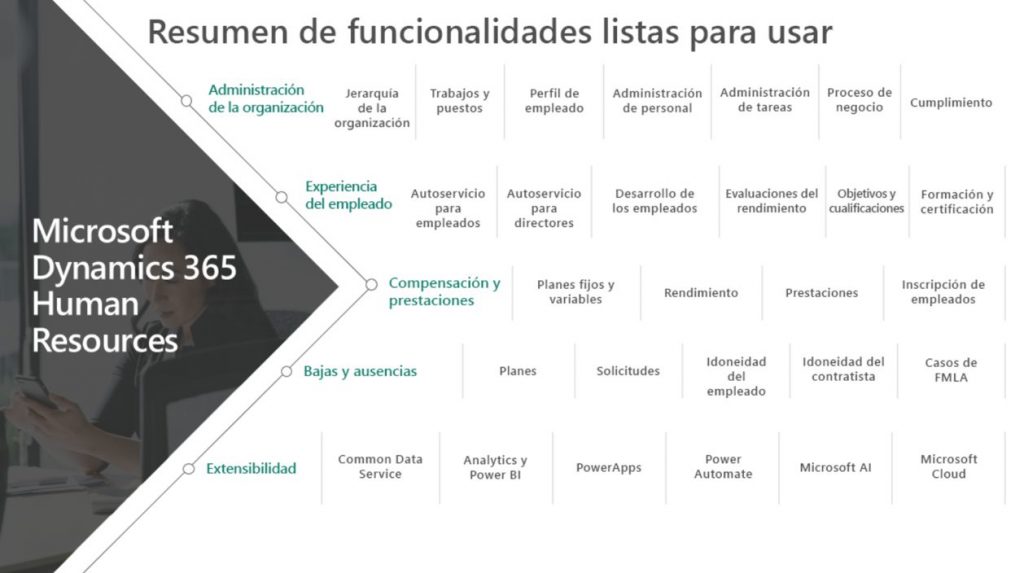
Official Microsoft documentation image
Those of you who know Dynamics 365F&O will find the D365HR navigation panel very familiar.
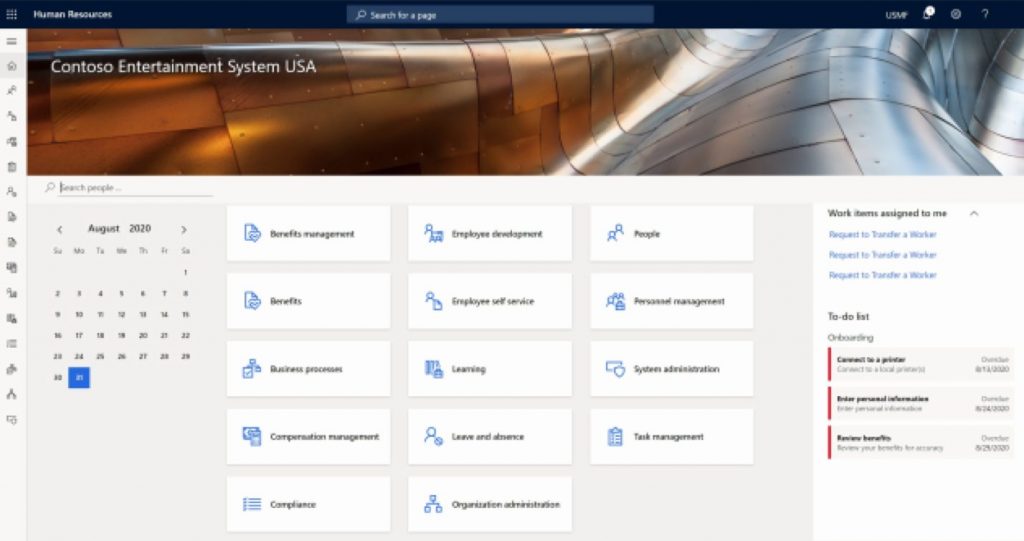
Official Microsoft documentation image
LThe modules that are included cover all the needs to be addressed, not only by the human resources department but also what Microsoft calls “Employee self-service” or even better “Employee Portal”, which provides and facilitates the access and management of each worker to all their information.
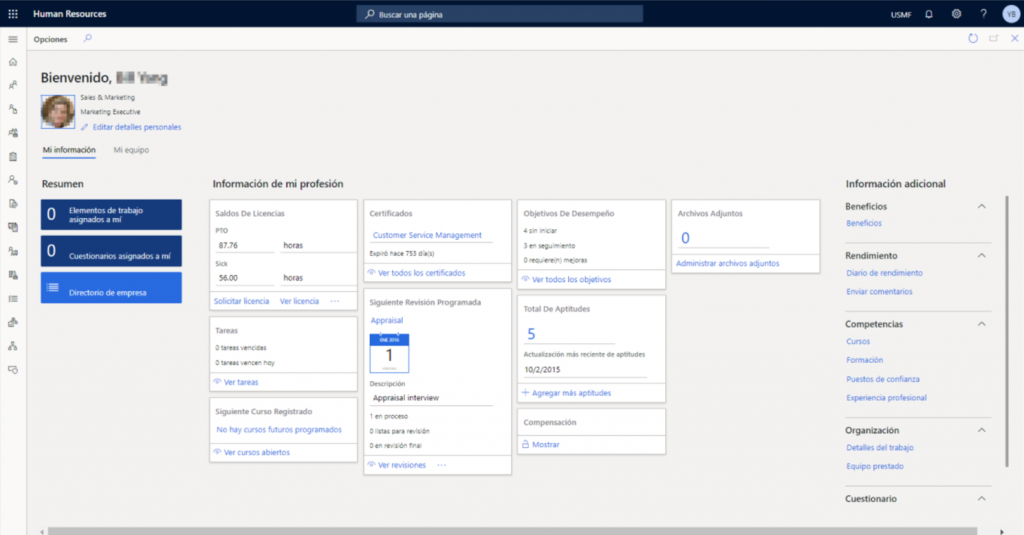
Official Microsoft documentation image
From the collaborator contact details, given that it is possible to make a difference between employees and freelancers, to information like:
– Holidays
– Tasks assigned
– Courses
– Certifications
– Reviews/ evaluations scheduled
– Performance goals
– Skills and abilities
– Compensation & benefits
– Attached files and other additional information
And the same, only in a screenshot, for “My Team” information for the people who manage teams.
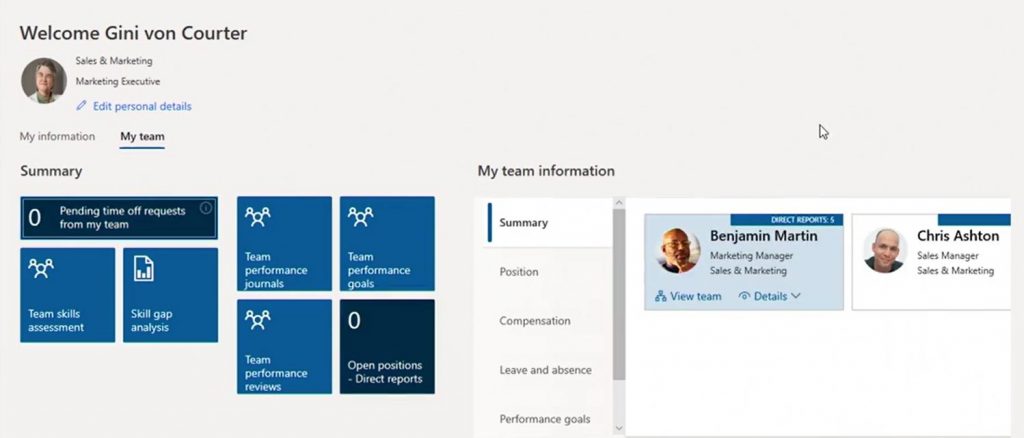
Official Microsoft documentation image
About the modules that are designed to streamline management and make life easier for Human Resources professionals, I cannot explain them all in this article (some of them are quite obvious such as Holidays, Compensation, Benefits or Training) and on the others with a bit more complex stuff, some examples:
Personnel Management either internal, external or to be hired.
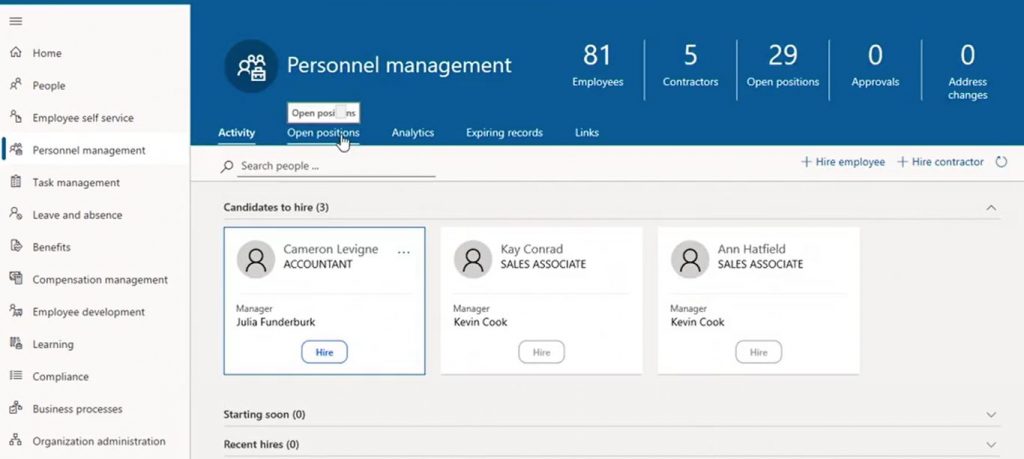
Official Microsoft documentation image
The Employee Development module is extremely customisable to be able to adapt the tool with the capacities and different skills that each business needs to assess easily and quickly.
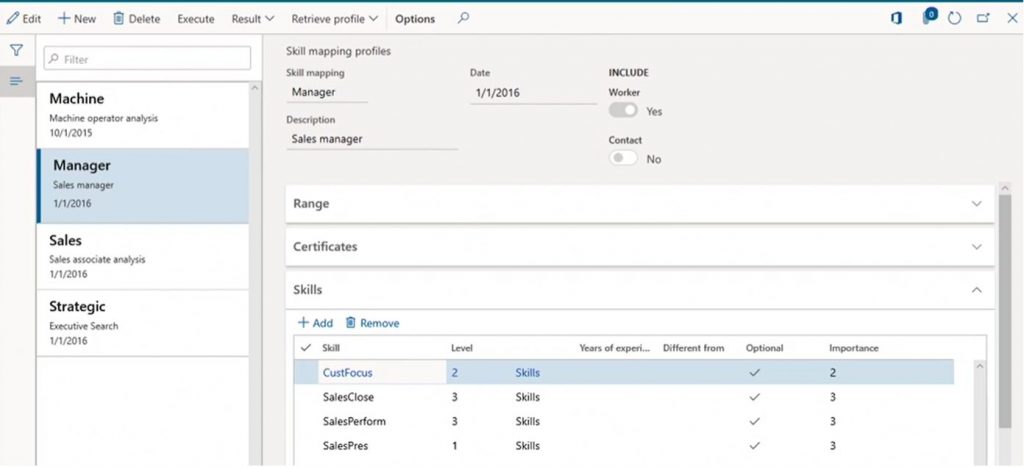
Official Microsoft documentation image
Identify the people within the team that best fits into a new position, new team or maybe a new office is essential for any business and to have a system based in competencies already in place that helps on this job in an agile way and also is capable of stablish.
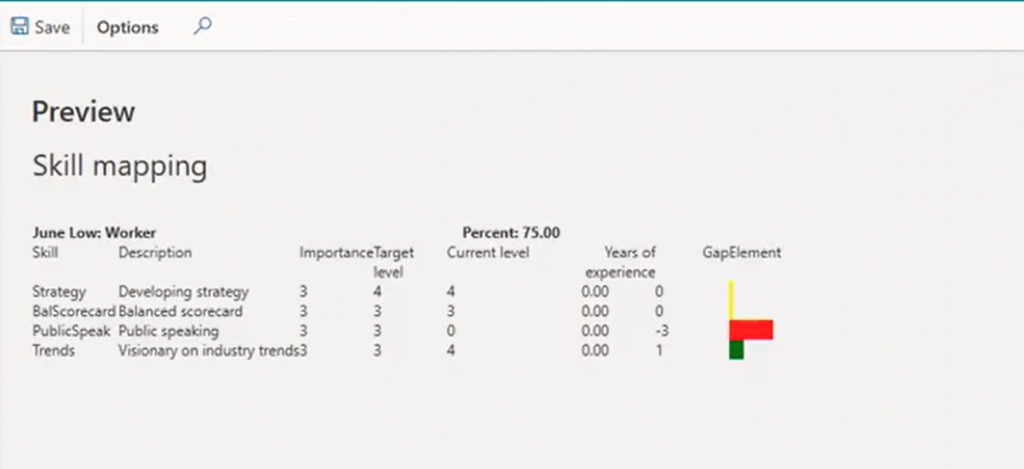
Official Microsoft documentation image
And of course, with the possibility to enhancing the tool and improve our visibility over all our team capacities with Power BI.
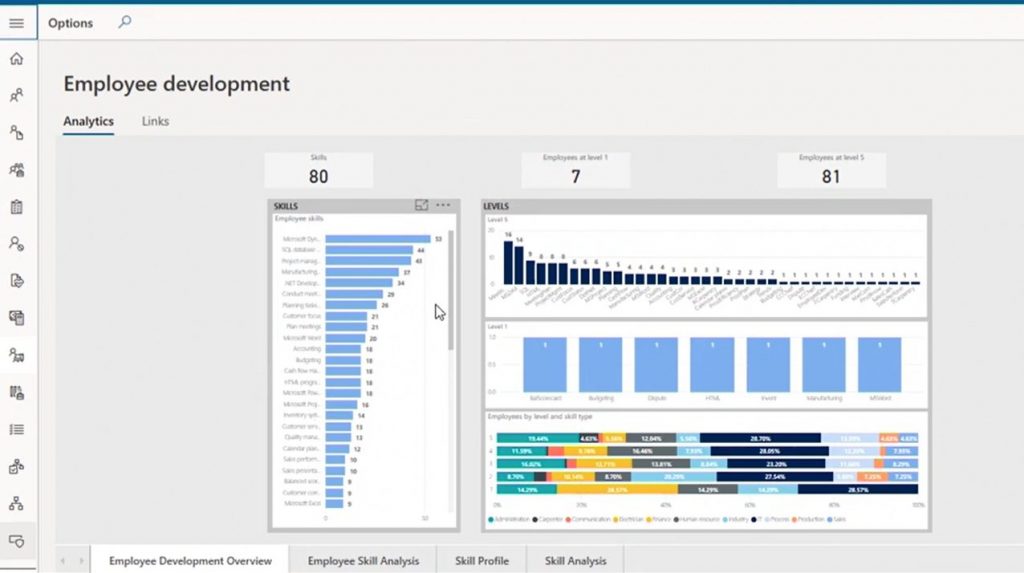
Official Microsoft documentation image
Something very important in people management is to correctly establish the expectations we have of each other, and with “each other” I mean that the conversation takes place in all possible directions, from top to bottom, from bottom to top and horizontally between equals and different departments. With this we will be able to review our objectives, whether they are those that have been assigned to us or those that we want to achieve for ourselves and D365HR plays right into our hands.
Different goals at an individual or team level, by category, start date and desired date of achievement.
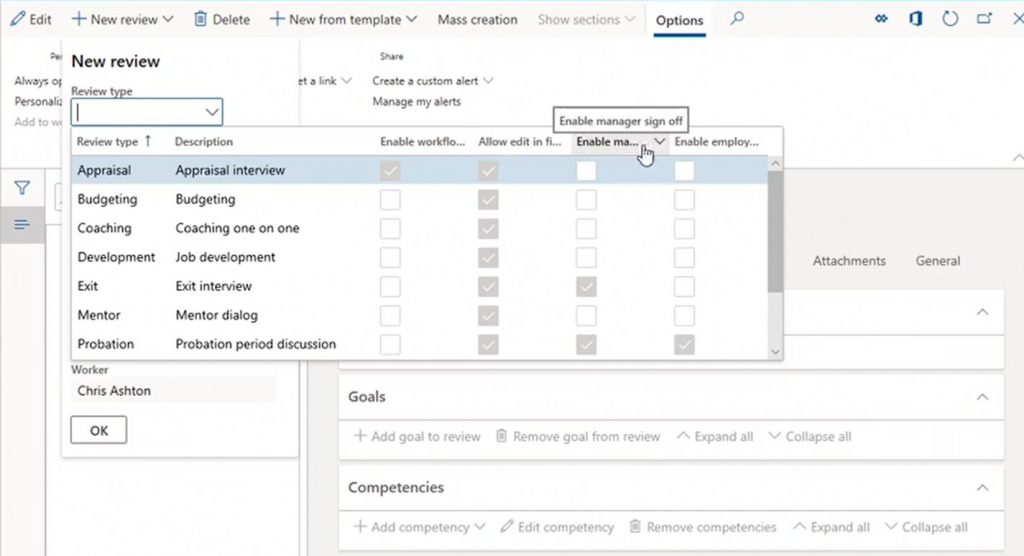
Official Microsoft documentation image
Dynamics 365 Human Resources helps companies beyond the management, organisation, planning or even loyalty of their teams but also helps to connect them, tightening the relationship between Human Resources and Operations.
My favourite part? If it was not noticed much at the beginning of the article, it is, without a doubt, the integration with Linkedin Talent Hub, since it represents an immense comparative advantage over any other platform. Linkedin allows you to reach 95% of the candidates available in the specialisation you choose, the geographical area that interests you, both active and passive candidates, plus all the information about their background updated personally by themselves and whether or not they’re open to new opportunities. The platform also allows the user to message potential candidates even if they are not direct connections and safe the profiles organised by projects. Do you know that a notification can also be activated if someone in particular changes a single comma in their profile?
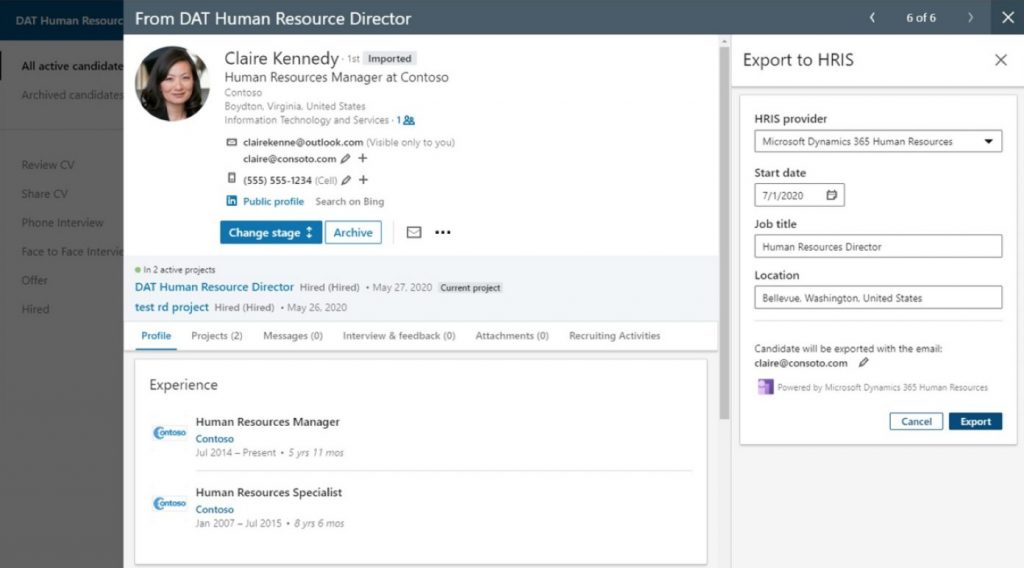
Official Microsoft documentation image
If information is power, in the Human Resources world and Recruitment in particular, Linkedin Talent Hub is the absolute and all-powerful Yoda and its integration with D365HR is becoming available this month of December 2020.
More information at here.


